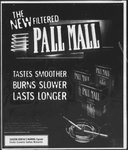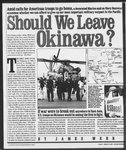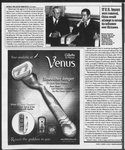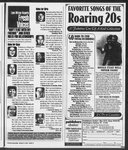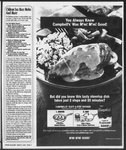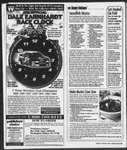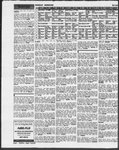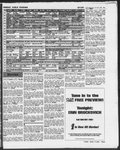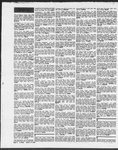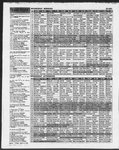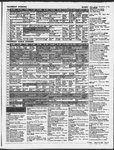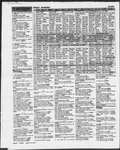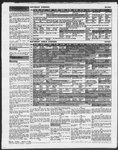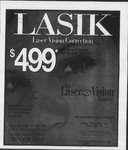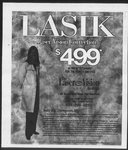| OCR Text |
Show GheSaltLakeTribune BUSINESS @ MOTLEY FOOL, E-2 M@ CHET CURRIER, E-3. MEHUMBERTO CRUZ, E-4 ME TRADEWINDS, E-7 MARCH 11, 2001 . Technology forthe Third World Can Help Utah’s Small Dairies too expensive and technically complicated tb install in her dairy. Disgusted by pouring good milk down the drain, Womack wentin search ofan alternative for herself and small dairy farmers like her. Through months ofInternetresearch she found an answerin Milk-Pro,a system that farmers in someofthe world’s poorest countries have used for several years. She hopes the equipment, developed in South Africa for Third World needs, will be the salvation of small Utah family dairies. The pasteurization system is small enough to process a few gallons of milk or as many as 25 gallons an hour. Pasteurization kills harmful bacteria by raising the milk’s temperature. State law requires pasteurization for milk that is sold from anywhere butthe dairy. “This equipmentis geared toward the small dairy farmer,” said Womack.“It works for people who wantto milk five cows.” Milk she has processed with the system is undergoing finals tests by the Division of Regulatory Services for the state Departmentof Agriculture and Food to be approved for retail sale. BY AMY HODSON THE SALT LAKE TRIBUNE Until recently, Mapleton dairy owner Lisa Womack was milking her 20 Jersey cows and Compiled by Glen Warchol Web RumorMill Gets Taste ofIts labeling the milk as hazardous waste to dispose of it. Womack is an embryologist who owns her cows,notfor their milk, butfor their valuable embryos shesells all over the world. She hated wasting the milk, but her small herd of genetically-superior cows do not produce enough milk to make it worth a large processor’s time to pick up. To make matters worse, raw milk in large quantities is considered a Own Medicine Vault Inc., New York, touts its Vault.com message boards as a provider of “insider company information” for studying upon a prospective new employer. But since the company laid off32 workers earlier this year in biohazard, complicating disposal. The two major cooperatives in the state probably spill more milk than her cows produce. “It is the plight of the small farmer,” says Womack. “Get more cows to makeit pay, or get outof business.” Hoping to process andsell the milk herself, Womack looked into buying her own vat pasteurizer, bottler and capper. She found that a acost-cutting move, one vocal message-board group has beenits own employees.“Vault game:find andfire employees,” reads onetypically anonymous posting, with a link to a video game.Other postings range from allegations of mismanagementto complaints thattheoffice is too cold. “T can certainly empathize with employers whohaveless-than- 15-gallon pasteurizer was close to $15,000 and a bottler and capper would cost about $13,000 — See PASTEURIZATION,Page E-2 Lisa Womack fills liter-sized plastic bags with raw milk to be or in a 145-degree water bath, With this simple and inexpensive pasteu equipment, Womack is able to operate her smalldairy in Mapleton. SELLING THE GAMES flattering messages on our message board. But my answerto them is, ‘We have them,too,’” says Mark Oldman, a Vault.com co-founder. He says Vault.com doesn’t pull any messages unless they run afoul ofthe guidelines it applies to others. But somecritics, alleging the opposite, post at a separate Website with an unprintable name. — WallStreet Journal Qa Loose Change LELYSTAD,Netherlands — The Royal Dutch Mintneeds a warehouse thesize of two soccerfields to store its 2.8 billion shiny new euro coins, stacked no more than three crates high lest the building start sinking into the ground. Andthatis just the pocket change for one little cornerof the continent. For the past two years, the European Union’s single currency has existed only as a blip on currency trad- ing screens or an extra figure on price tags for shoppers wanting to practice their conversionskills. All that changes next New Year’s Day wheneuro notes andcoins becomelegal tenderin 12 of the 15 European Union countries — the latest and biggest step yet in the continent's long, slow march toward unity. Almost 300 million Europeans are giving up oneoftheir most potent symbols of nationhood — their francs, marks, drachmas,pesetas,punts,lire, guilders, escudos, markkaa and schill- ings — in exchangefor something new and untested. Scary scenarios abound, like the re- cent simulation at Amsterdam's central train station that showed that on Jan.1 thelinefor tickets would be 1,200 strong by the end ofthe day while clerks fumbled with their calculators. “I doubt very much whetherpassengers would actually queue quietly for so longatthe ticket counters,” EU Monetary Affairs Commissioner Pedro Solbes said recently. “But the problem is real.” Yet most Europeans are greeting the switch not in panic but with a mix ofanticipation and resignation. “That's the wayit goes.It's evolu- Steve Griffin/TheSalt Lake Tribune Patrons have beenflockingto Park City’s Olympic Spirit store, and other Spirit storesin Utah,in a rush to buy an early souvenirfor the 2002 Winter Games. Goin ss for the 0 er tion,” Hans van Bemmel, ownerof a medical-supply shop near Amsterdam,said at a “euro readiness” seminar sponsored by the Dutch central bank. “There are no borders anymore.” — Associated Press Q Another Ventura Smack Down Otherstates watch as Minnesota * takes on job-training reform. x. i ot) baryasee Shoppers sprinting to Olympic Spirit stores BY KARL CATES THE SALT LAKE TRIBUNE PARK CITY — Thebiggest-ticket item in the joint is a $750 limited-edition torch from the Atlanta Games of1996. The cheapest: a 45-cent postcard. Everything else in the’1,400-square-foot Olympic Spirit Store on Main Street is priced somewherein between, and mostof it moves like hot cakes, claim managersofthe outlet, one of only seven such storefronts operated nationally by the U.S. Olympic Committee (USOC). Pins, priced at $7 and up, are popular. Soare Tshirts, typically tagged at $12 to $16, But patrons can pick from myriad other goods, though the much sought-after “Powder,” one of three mascots for the 2002 Winter Games in Utah,is on back-orderuntil the end of the month. Park City sells,” said Mike Laird, manager of the store, while he watched the front door swing open every minute or two as customers wentin and out. “The merchandise sellsitself,” added Laird, who manned the operation from a perch near the cash register. Eighty percentofthose whowalkinto the place end up buying something, said Glenn Dalton, associate director for the USOC’sretail operations in the United States. Most visitors are tourists, most are prone to impulse buys and most part with about whatit costs these days for two people to buy a nice lunch in Park City. “The average customer spends $37 to $40,” said Dalton. ‘Thestore's expenditure per patron is almost iden- tical to its sister establishment at the Crossroads Plaza in downtown Salt Lake City. The state's third official Olympic Spirit Store, in Trolley Corners, lags “Anything that has an Olympic logo on it and says See SPIRIT STORES,Page E-3 Gov.Jesse Ventura’s proposal calls for scrapping the state’s system ih favor of one more closely aligned with employer needs. It would eliminate different programs aimedat disparate groups, fromthe blind to veterans, and concentrate on building the general-population work-force skills that employers seek. “We continue to have a mismatchofskills and jobs,” says Morris Anderson, chancellor of MinnesotaState Colleges and Universities. Job-training programs in Minnesota and otherplaces are usually aimed at the out of work, but many states now worry more abouta lack of skills than a lack ofjobs. Anderson, who would oversee thetransition, says he expects the system still would help the unemployed. Otherstates are watching, says Kate Cashen, employ: mentand training directorfor the National Associationof State Workforce Agencies in Washington, D.C. More states “aretrying toalign themselves more with the employer as the primary customer,” she says. Wall Street Journal High Costs, Red Tape Will Dissuade Most Mexican Truckers From U.S. Highways BY!BRE ANM. KNIGHTRIDDER NEWSSERVICE CUAUTITLAN IZCALLI, Mexico Now that the United States has been ordered to open its highways to Mexican trucks, the Teamsters union warnsthat a fleet of decrepit rigs with poorly trained drivers will soon be coursing over Texas roads, Not so fast, says trucking executive Antonio Anchustegui. He says that most Mexican truck companies probably ‘von't even try to provide service beyond the border, Those that do, such as Anchustegul’s Transportes EASO SA, defy U.S. stereo types, The company has invested heavily in proper maintenance and 1,200 cabs that boast an average age of less than 2 years. All meet U.S. safety standards, he says. The company, in which MS Carriers Inc. of Memphis, Tenn., owns a minority stake, already legally sends someof its trailers into Texas. Andit trainsits employees in everything from defensive driving to nutrition. “We comply with all the U.S. regulations, and the cabs we buy are the ones U.S. firms buy,”said Anchustegui, whois the chief executive officer of Transportes EASO. “There's a huge market in the border states, and we cquld offer advan tages of timeand efficiency.” A dispute resolution panelof the North American Free Trade Agreement ruled last month that the U.S. government must allow Mexican trucks and truckers to travel beyondthe 20-mile borderzone. President Bush has said hewill abide by the decision, although he has notdetailed exactly how hewill implementit. Even when U.S. highways completely open to Mexicantrucks,a host of legal and 1 Mexico to opentrade centerin US. E6 economic reasons probably will dissuade most companies from using them, experts say. And the few that might try, such as Transportes EASO, own the cream of Mexico'sfleets. “This is going to be a yawner,” pre dicted John Adams, the director of the Laredo Development Foundation, who lives in thecity that handles moreU.S. Mexicotrucktraffic than any other. “It'll be very benign it unfolds.” Critics disagree, fretting that border officials can’t possibly performproper in: trucks arriving at the border each day actually undergoesinspections, “Weonly inspect the ones that look really, really bad,” Texas Department of Public Safety spokeswoman Tela Mange said Wednesday. “Like, ‘Oh, my God, how's that gonna stay together?’ We're only taking the worstof the worst,” Theresultis that only a fraction of the Mexicanrigs hauling tools, car parts and bluejeans are stopped for safety inspections before rumbling into the United States. Currently, the roughly 5 million Mexicantrucks entering the country each year spections on Mexican trucks heading north. Worse, Mexico does not haveare- arelimitedto a 20-mile zone north of the border, where they transfer their loads to liable safety inspection systemof its own, U.S, trucks. izen, the consumer group founded by Texas officials say just one out of every 100 rigs is checked and the safety record Only a tiny portion of the thousands of Sce TRUCKERS,Page E-6 according to a recent study by Public Cit Ralph Nader. |




































































































































